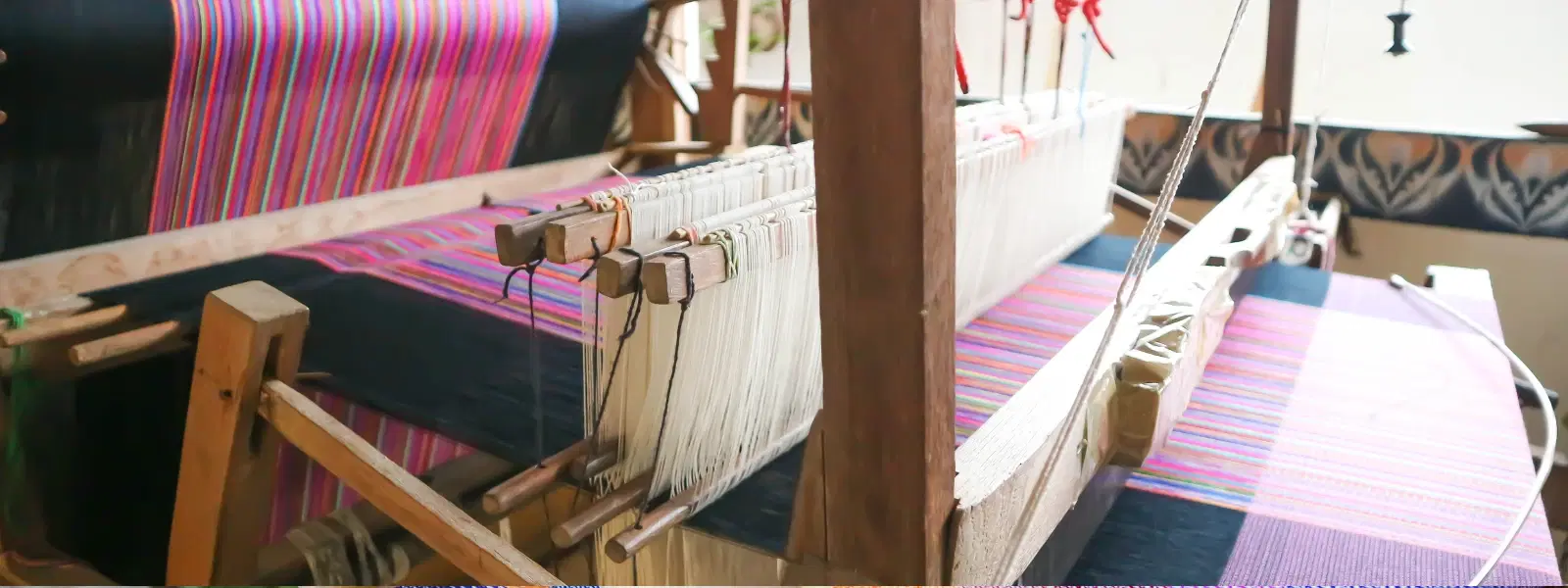
Hotels
•02 min read

Mashru textile weaving, a mesmerizing craft steeped in tradition, has captivated hearts for centuries with its unique blend of silk and cotton. This exquisite fabric, with roots in the historic regions of Patan and Kutch, reflects a rich heritage that continues to thrive amidst modernity. In this blog post, we explore frequently asked questions about Mashru weaving, delving into its history, techniques, patterns, and cultural significance to provide a comprehensive insight into this art form.
Mashru textiles are traditionally handwoven fabrics known for their distinctive silk and cotton blend. Born out of practical and cultural needs, these fabrics offer the elegance of silk combined with the comfort of cotton. In the vibrant regions of Patan and Kutch, artisans have refined the art of weaving Mashru, making it a significant element of local textile traditions.
The story of Mashru fabric begins in Gujarat’s renowned textile heritage. Historically, the fabric was developed to meet specific cultural guidelines while still retaining an element of luxury. Over time, Mashru weaving evolved and became intertwined with the fabric of Patan's cultural and textile heritage, embodying centuries of tradition and artistry.
Artisans in Patan and Kutch employ intricate weaving techniques passed down through generations. The process involves a blend of precision and creativity, where traditional tools, age-old methods, and unique rituals contribute to every piece of Mashru fabric production. This craftsmanship not only preserves history but also ensures each fabric tells its own story of dedication and skill.

The aesthetic appeal of Mashru textiles is amplified by the vibrant ikat and geometric designs popular in Kutch. These patterns are far more than just decorative elements; they hold cultural symbolism and historical narratives. The rhythmic patterns and unique color schemes illustrate the fusion of artistic expression with indigenous cultural values.
Did You Know? Mashru textiles were traditionally woven to mimic the luxurious feel of silk while adhering to cultural norms that prohibited direct contact with silk for certain communities.Cultural Significance of Mashru Textiles
Mashru textiles occupy a revered place in the panorama of Indian artisanal fabrics. They are not merely utilitarian fabrics but also feature prominently in festivals, ceremonies, and daily life. The craft bridges the gap between functional attire and artistic celebration, contributing significantly to India's rich tapestry of culture.
Preserving Mashru weaving is a testament to the commitment of communities and government initiatives in Gujarat. While modern challenges threaten traditional crafts, ongoing efforts by artisan cooperatives and awareness campaigns help sustain this timeless art. Supporting these initiatives ensures that future generations continue to appreciate and inherit a proud heritage.
Mashru fabric combines silk and cotton, offering the sheen of silk with the comfort of cotton. This blend makes it both luxurious and practical.

Mashru textile weaving is primarily practiced in Patan and Kutch, regions in Gujarat known for their rich textile heritage.
Mashru fabric has a long history rooted in Gujarat’s weaving traditions. It was created to adhere to cultural norms while offering the elegance of silk.
Mashru textiles often feature vibrant ikat patterns and geometric designs, reflecting the cultural artistry of Kutch and Patan.
Efforts to preserve Mashru weaving include government initiatives, artisan cooperatives, and awareness campaigns aimed at promoting this traditional craft.
This exploration of Mashru textile weaving in Patan and Kutch reveals an art form that stands as a testament to India’s rich cultural and artisanal heritage. By understanding the unique blend of techniques, designs, and historical influences, we can fully appreciate how Mashru weaving connects the past to the present. The enduring legacy of Mashru textiles invites further exploration into the vibrant world of Indian crafts and the stories they tell.